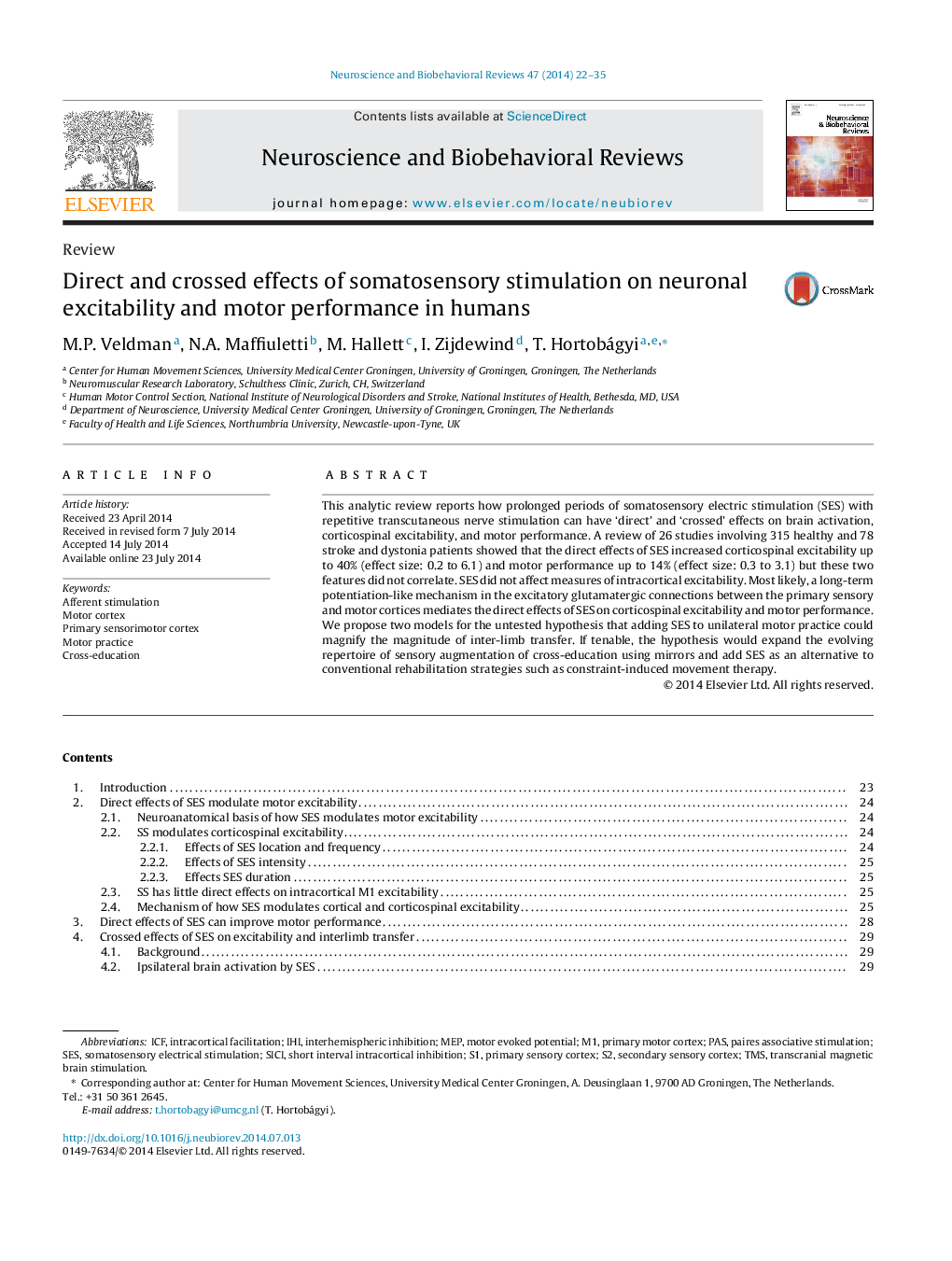| Article ID | Journal | Published Year | Pages | File Type |
|---|---|---|---|---|
| 7303709 | Neuroscience & Biobehavioral Reviews | 2014 | 14 Pages |
Abstract
This analytic review reports how prolonged periods of somatosensory electric stimulation (SES) with repetitive transcutaneous nerve stimulation can have 'direct' and 'crossed' effects on brain activation, corticospinal excitability, and motor performance. A review of 26 studies involving 315 healthy and 78 stroke and dystonia patients showed that the direct effects of SES increased corticospinal excitability up to 40% (effect size: 0.2 to 6.1) and motor performance up to 14% (effect size: 0.3 to 3.1) but these two features did not correlate. SES did not affect measures of intracortical excitability. Most likely, a long-term potentiation-like mechanism in the excitatory glutamatergic connections between the primary sensory and motor cortices mediates the direct effects of SES on corticospinal excitability and motor performance. We propose two models for the untested hypothesis that adding SES to unilateral motor practice could magnify the magnitude of inter-limb transfer. If tenable, the hypothesis would expand the evolving repertoire of sensory augmentation of cross-education using mirrors and add SES as an alternative to conventional rehabilitation strategies such as constraint-induced movement therapy.
Keywords
ICFTMSSICICross-educationIHIMEPSESAfferent stimulationTranscranial magnetic brain stimulationIntracortical facilitationMotor practiceMotor cortexprimary motor cortexprimary sensory cortexPrimary sensorimotor cortexinterhemispheric inhibitionshort interval intracortical inhibitionMotor evoked potentialPAS
Related Topics
Life Sciences
Neuroscience
Behavioral Neuroscience
Authors
M.P. Veldman, N.A. Maffiuletti, M. Hallett, I. Zijdewind, T. Hortobágyi,
